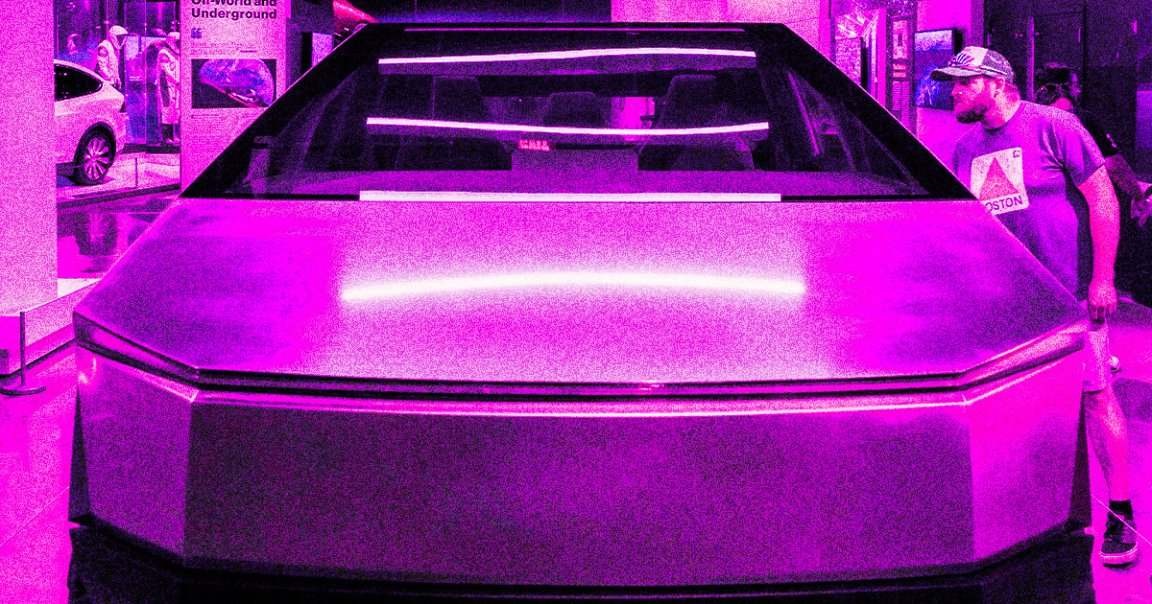
Road Warrior
The Tesla Cybertruck’s distinctive looks could have deadly consequences for its passengers, pedestrians, and other cars on the road unfortunate enough to cross its path, experts fear — despite claims made by CEO Elon Musk that it will be “safer per mile than other trucks.”
Video of crash tests featuring the vehicle has been widely scrutinized after being shown in an official livestream of the Cybertruck’s delivery event last week.
Because only limited footage was shared with the public with no accompanying data, there’s only so much that can be deduced right now. But whatever the armchair experts may be saying online, the real experts are already quite concerned with what they’ve seen so far.
They cite the Cybertruck’s stainless-steel exterior, an unorthodox material to use in a car body due to its weight and stiffness — not to mention manufacturing challenges — as heightening the danger of collisions, especially with pedestrians. And go figure: not only is the car made up of the same stuff as a kitchen knife, it’s got the sharp edges of one, too.
“The big problem there is if they really make the skin of the vehicle very stiff by using thick stainless steel, then when people hit their heads on it, it’s going to cause more damage to them,” Adrian Lund, former president of the Insurance Institute for Highway Safety (IIHS), told Reuters.
Crumple Stiltskin
Much attention was drawn to the Cybertruck’s apparent lack of crumple zones, areas of a car designed to absorb the impact of a collision by deforming. Rigid stainless steel would seem a poor candidate material for crumpling, meaning that occupants are potentially less shielded against the full force of an impact.
That could also be bad news for other cars on the road. If the Cybertruck doesn’t crumple enough in a collision, it’ll slam into other vehicles like a sledgehammer on wheels.
“If you’re in a crash with another vehicle that has a crumple zone and your car is more stiff, then their cars are going to crush and yours is resistant,” David Friedman, the former acting head of the National Highway Traffic Safety Administration, told Reuters.
Samer Hamdar, a professor of auto safety at George Washington University, echoed fears over the Cybertruck’s crumple zones, but cautioned that there could be other features in the car to compensate that we haven’t seen yet.
“There might be a possibility of a shock-absorbent mechanism that will limit the fact that you have a limited crumple zone,” Hamdar told Reuters.
At any rate, while Cybertrucks are finally being driven off the lot with deliveries set to start in the US, they’re so far a no-go in the European Union — likely due to its sharp, protruding edges, and bloated weight.
More on Tesla: The Cybertruck’s Giant Windshield Wiper Is Floppy